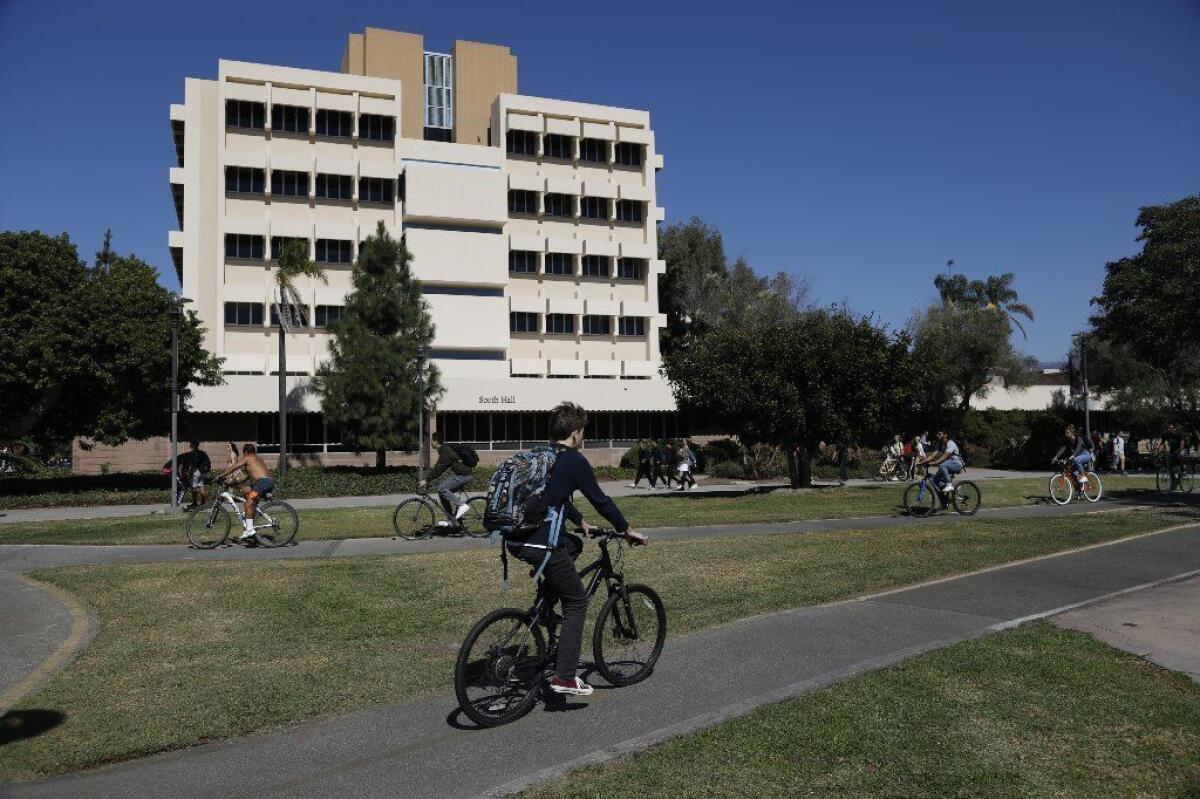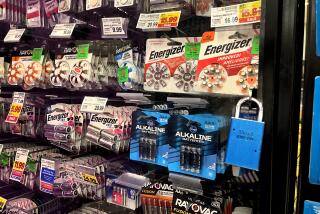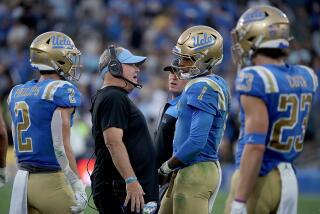UC Santa Barbara sues Walmart, Amazon and others over LED lightbulbs

UC Santa Barbara is looking to halt imports of vintage-style LED lightbulbs that are sold at five of the nation’s biggest retailers, including Walmart Inc., Target Corp. and Amazon.com Inc.
UCSB says the retailers should be paying it royalties from sales of the bulbs. Bed Bath & Beyond Inc. and Ikea of Sweden also were named in the complaint filed Tuesday with the U.S. International Trade Commission in Washington and in civil suits in federal court in Los Angeles.
The energy-efficient lightbulbs are designed to imitate the iconic look of the incandescent bulbs developed by Thomas Edison almost a century and a half ago. The dangling Edison bulbs, with their old-fashioned look, glowing filaments and sepia tones, are popular at restaurants and with modern home designers.
Typical LEDs use opaque glass that hides the structure inside the bulb. Researchers at UC Santa Barbara’s Solid State Lighting and Energy Electronics Center said they developed technology that would allow for an exposed filament that disperses light in all directions.
Seth Levy, the lawyer representing the university, said the school had approached some of the retailers to seek a licensing agreement and was rebuffed. The bulbs are all made overseas by many manufacturers, so suing the sellers is more efficient than trying to track down all the manufacturers.
“These retailers were selected as a cross-section of the kinds of places we find these products,” Levy said. While the school wants to have more LED bulbs in use because they save energy and last longer, “there needs to be a license back to the university for using that intellectual property.”
The university took the unusual step of partnering with a litigating funding firm, Longford Capital, to help cover legal costs so it “would not have to divert funds from other academic priorities,” Levy said.
Longford would get a cut of any proceeds from the suits, but the bulk would go to the school and the inventors, including UC Santa Barbara professor Shuji Nakamura, who was co-recipient of the 2014 Nobel Prize in physics for his discovery of how to coat blue diodes with phosphor to make the light white. That opened the LED market to commercial applications that have transformed modern lighting, including headlights in cars, streetlights and electronics.
Complaints at the U.S. trade agency typically take 15 to 18 months to settle once the commission agrees to investigate, far quicker than a district court. Patent owners often use the threat of an import ban to get the other side to the bargaining table.
The global LED lighting market, including residential, commercial and industrial uses, reached $45.57 billion last year and is expected to grow at an annual 11.8% rate through 2025, Grand View Research said in a June report. LED lighting is projected to dominate the U.S. lighting market and reduce energy consumption by 40% by 2030, according to the U.S. Energy Department.
More to Read
Inside the business of entertainment
The Wide Shot brings you news, analysis and insights on everything from streaming wars to production — and what it all means for the future.
You may occasionally receive promotional content from the Los Angeles Times.










